Why doesn't the cherry bear fruit?
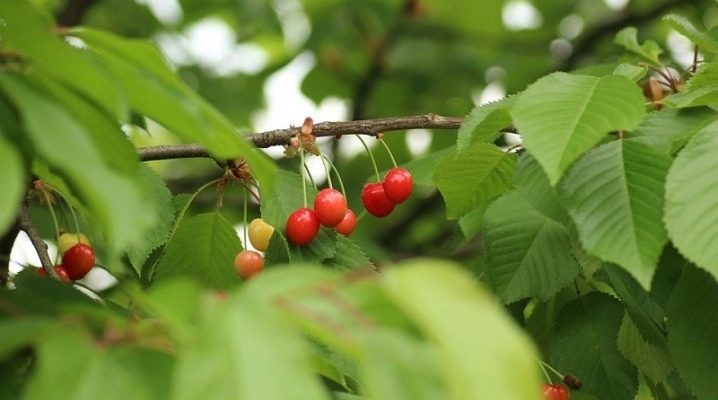
Cherries are one of the most popular garden trees. It can be seen on almost every site. Unfortunately, many gardeners sooner or later notice that the cherry has stopped bearing fruit. If you notice this problem in time, it is quite possible to solve it.
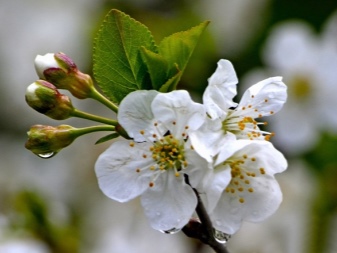
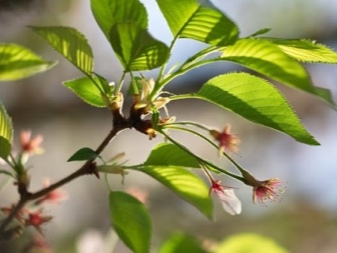
Causes
If the cherry does not bear fruit, you first need to find out for what reasons this is happening.
Improper care
The most common reason that there are no berries on the tree is the improper care of the cherries. You need to pay attention to a number of points.
- Top dressing. Very often cherries are planted in areas with poor soil. Trees do not bear fruit for this very reason. Regular feeding will help to fix this problem. Liquid mineral fertilizers are suitable for cherries. They can be used both in spring and autumn. Purchased top dressing can also be replaced with regular humus or compost. This option is best for fall. The product is applied to the soil in a near-stem circle. The amount of fertilizer depends on the age of the trees. One young plant needs 1-2 kg of compost. About 3 kg of the product is already introduced under a tree over 7 years old. Too abundant feeding also negatively affects the fruiting of cherries. Do not use too much nitrogen fertilizer in spring and early summer. You can not feed trees with fresh manure. This will lead to a decrease in the plant's immunity.
- Incorrect cropping. If the cherry does not set fruit during good flowering, the crown may be too thick. This tree does not have enough nutrients to form berries. Therefore, the owners of the site are usually left without a crop. Timely cropping can fix this problem. It can be carried out both in autumn and spring. Every gardener chooses for himself the most convenient time to work. All weak, broken and too old branches need to be removed in the process. It should be remembered that cherries do not tolerate mass pruning well. Therefore, it is best to prune the branches frequently and carefully. In this case, the harvest will be good.
- Watering. In order for the tree to bear fruit and the berries to be tasty, it needs to get a sufficient amount of moisture. Usually, the soil is saturated with water during rains, so the plants do not need additional moisture. If it rarely rains in spring and summer, the garden should be watered from time to time. This should be done as the soil dries out.
All these procedures do not take much time, but they help to significantly increase the yield of trees.
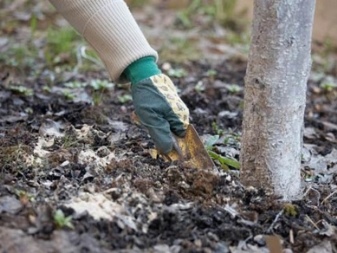
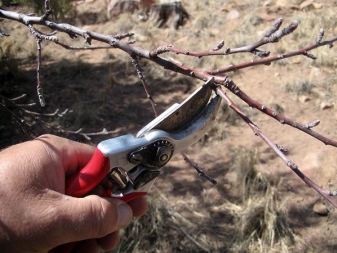
Adverse environmental impact
Late frosts have a bad effect on the condition of cherries. It is difficult to predict what the weather will be like in spring. But there are two ways to try to solve this problem. You can choose late varieties of cherries. This is especially true for regions where winter lasts for a long time. Such cherries bloom later than others. To further slow down this process, you can also whitewash the trunk at the very beginning of spring. It will also help protect the tree from small pests and scorching sunlight. But if the trees have already begun to bloom, and the temperature suddenly dropped below + 5 ... 6 degrees, the cherry trunk should be well wrapped with some kind of dense material. This will protect the tree from freezing.
Frequent rains or droughts also negatively affect the state of cherries. But dealing with these problems is quite simple. If the trees do not have enough moisture, watering them regularly is enough. This should be done after sunset.If it rains too often, gardeners are advised to regularly loosen the soil in the trunk circle. In this case, the water will not stagnate there.
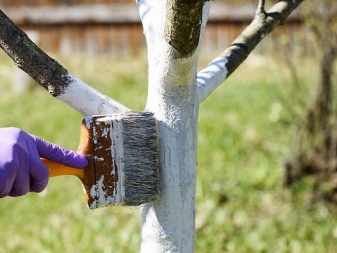
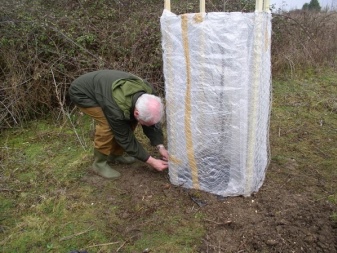
Inappropriate landing site
If the cherry was originally planted in the wrong place, it will not bear fruit either. This happens when the plants are planted under the following conditions.
- In the shadow. Cherries need sunlight. Therefore, they are usually planted in open areas. It is strongly discouraged to place the tree in the shade. The harvest on it will be very poor, and the berries will not be sweet enough.
- It's too deep. Planting a cherry seedling in a too deep hole can lead not only to a lack of harvest, but also to its complete death. The root collar should rise several centimeters above the soil. It is also important to make a few indentations when planting around the seedling. In this case, water will not collect in the near-trunk circle. Thanks to this plant, fungal diseases will not be afraid.
- Close to bad neighbors. Gardeners know that cherries should be placed next to other trees that bloom at the same time as it. In this case, the flowers will be well pollinated, because there will be many bees on the site. Most often, a second is planted next to one cherry. If this is not possible, you should choose self-fertile tree varieties. In this case, the plant will bear fruit abundantly. It is not recommended to plant conifers, apple trees, and some types of flowers, such as daffodils or tulips next to cherries.
- On an area with acidic soil. Cherries prefer neutral soils. Therefore, in such areas, it will grow poorly and not bear fruit. It is possible to understand that a tree does not bear fruit due to improperly selected soil, focusing on several basic signs. Cracks constantly appear on the trunk of these cherries. The branches and the trunk itself grow very slowly. The color falls off very quickly. Ovaries are not formed on the branches. It is quite possible to correct this situation. To do this, before planting seedlings on a new site, you need to deacidify the soil. Experienced gardeners recommend using wood ash for this. It crumbles around the trunk. After that, the soil is dug up, and the site is well watered. You can replace the ash with crushed eggshells.
The seedlings themselves are also worth buying only in proven places. Otherwise, there is a risk of buying a wild cherry variety. Such a tree will not bloom and bear fruit for a long time. When buying, it is important to carefully examine the seedlings. They must be healthy and strong. It is also worth remembering that young seedlings do not begin to bear fruit immediately. This usually occurs at 3-4 years of plant life. The fruiting process slows down at the age of 17-20 years. At this time, the plant must either be cut, removing most of the branches, or replaced with a new one.
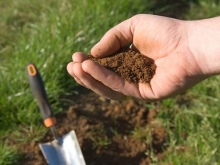
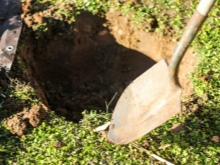
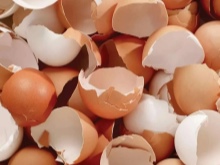
Diseases
There are also diseases that lead to a lack of fruiting. Most often, the plant does not bear fruit due to several diseases.
- Coccomycosis. This is one of the most common fungal diseases. It affects both young seedlings and adult trees. You can find out about its appearance by brown spots on the foliage. At the same time, the lower part of the leaves is covered with white growths. This disease spreads very quickly. If the signs of the disease are not noticed in time, the whole garden will soon be infected. To get rid of it, treatment must be carried out in several stages. To begin with, before flowering, all the cherries on the site must be sprayed with Bordeaux liquid. After its completion, purchased drugs are used. The most popular option is Horus. After harvesting, the Bordeaux liquid is used again. If everything is done correctly, next year there will be no problems with this disease.
- Moniliosis. This disease affects not only cherries, but also pears and other trees in the garden. Therefore, it is necessary to deal with it especially actively. First of all, the branches of the tree are affected, as well as its crown.The leaves look like they've been badly burned. Over time, the trunk of the cherry begins to crack. The berries that appear on the tree immediately start to rot. As in the case of coccomycosis, Bordeaux fluid is used to fight the disease. It is sprayed on both the branches of the tree and the area next to it. The product is used before and after cherry blossoms. Infected leaves and branches in spring and summer must be carefully cut and destroyed.
- Cracks. Quite often, gardeners notice that deep cracks appear on the cherries. Gum usually flows from them. This problem may seem minor. But it also leads to a decrease in the yield of the tree, as well as a slowdown in its growth. To combat cracks, ordinary garden pitch is used, as well as a solution of copper sulfate. They are applied to previously cleaned areas of the trunk. Such a simple process allows you to quickly solve the problem of gum removal.
All these diseases make cherries weak and vulnerable, so they cannot be ignored.

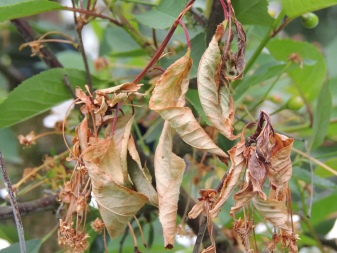
Pests
Attacks of common pests can also lead to a decrease in cherry productivity.
- Aphid. These small insects appear on trees in spring. Aphids destroy all green growth and deprive cherries of the nutrients they need. You can fight aphids using a soap solution, as well as an infusion of marigolds, tomato tops or ash. You will have to spray the area with garden trees several times. This should be done until the aphids completely disappear from the garden. To prevent the re-spread of pests, you need to destroy all the anthills that are nearby. You can plant garlic, parsley, marigolds, or other plants that can repel aphids near the tree.
- Cherry fly. This pest is a great danger to cherry trees. Flies feed on fruits, damaging them in the process. Because of this, the berries begin to rot and fall off. Insecticides and glue traps help fight cherry flies. In order not to miss the moment, it is necessary to start the struggle for the harvest within a week after the end of the cherry blossoms.
- Ringed silkworm. This pest is dangerous for almost all fruit trees. It is found in many regions. To save your crops, trees need to be inspected regularly. Having noticed a clutch of silkworm eggs, the area must be thoroughly cleaned. Preventive spring treatment of the site with insecticides also helps.
- Weevil. These small beetles usually hibernate in the soil under cherries. Outside, they begin to creep out in the spring, as soon as the air temperature rises. In May, they become active and destroy the young crop. To save the berries, the site must be carefully examined in autumn and spring. Tree trunks must be whitewashed.
To save your garden from small pests, it is also worth attracting birds to the site. They quickly destroy caterpillars and insects.
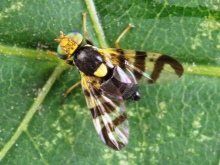
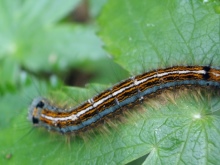
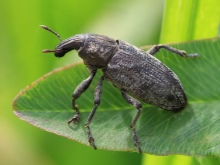
Control methods
To combat pests and diseases, it is recommended to use gentle preparations. If possible, it is better to do with folk remedies. This is especially true during the formation of ovaries.
If such simple remedies do not help, you need to use high quality chemicals. It is necessary to spray trees, carefully protecting the eyes, hands and respiratory tract. After treating the area, all clothing should be washed. It is also important to ensure that there are no animals or small children on the territory during the procedure. Spraying should be done either early in the morning or late in the evening. It is important to adhere to all instructions. In this case, the procedure will be safe.
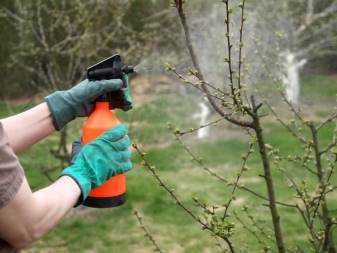
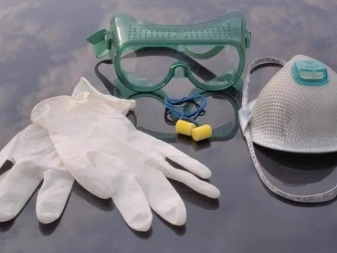
Prevention
In order not to waste time fighting diseases or pests, gardeners recommend adhering to simple prevention rules.
- Plant several varieties of cherries next to each other. In this case, the plants will be well pollinated.
- Timely clean up the site in the fall. Removing old leaves, weeds, and digging up the soil helps to get rid of pests that can hibernate in the soil.
- Do not neglect trimming. Pay attention to removing unnecessary branches annually. It is important to prune both mature trees and young seedlings. You need to prune, following all the rules. Cutting points must always be well processed.
- Prepare trees carefully for winter. Cherry is a thermophilic plant. Therefore, preparing for winter, the roots and trunk of the plant must be carefully covered.
- Feed and water the cherries regularly. Without this, they, like other plants in the garden, begin to feel worse.
- Attract beneficial insects to the site. To stimulate the process of pollination of the site, plants that bloom in May can also be planted in the garden. Some gardeners also spray the trees with a sugar solution. To do this, in one glass of water, they dilute a tablespoon of sugar. This helps attract bees to the site.
If you follow these simple rules, cherries on the site will always look good and delight owners with a good harvest.
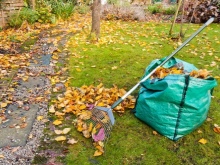
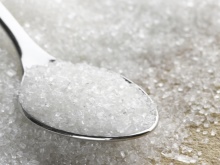
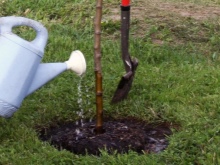













The comment was sent successfully.